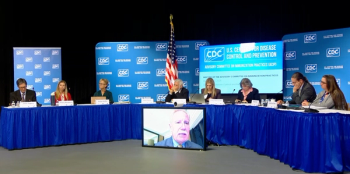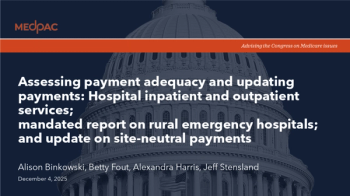
Medicaid cuts could cost lives, shutter hospitals and stall local economies, study warns
Key Takeaways
- Medicaid changes could lead to excess deaths, preventable hospitalizations, and economic losses, disproportionately affecting rural and underserved areas.
- The Congressional Budget Office projects 7.6 to 14.4 million Americans may lose Medicaid coverage by 2034, increasing mortality and hospitalizations.
New study projects thousands of deaths, rural hospital closures, and billions in lost economic output from Medicaid policy changes in the One Big Beautiful Bill Act.
A new peer-reviewed study published Wednesday, July 16 in
The research, led by Waymark in collaboration with researchers at the University of North Carolina (UNC) at Chapel Hill, uses a microsimulation model to quantify the projected impacts of H.R. 1, also known as the “
According to the study, for every 100,000 people who lose Medicaid coverage, there could be 13 to 14 excess deaths, 810 to 924 preventable hospitalizations and up to $1.2 billion in lost economic output annually.
“This analysis demonstrates that Medicaid
Millions projected to lose coverage
The Congressional Budget Office (CBO) has estimated that the Medicaid provisions in H.R. 1 — including work requirements, enhanced eligibility verification every six months and reduced federal matching rates — could result in between 7.6 million and 14.4 million Americans becoming uninsured by 2034.
Based on those projections, the researchers estimate up to 2,284 excess deaths and more than 145,000 preventable hospitalizations annually by 2034. Millions more would delay care due to cost or experience medication nonadherence.
The study also estimates 101 to 112 rural hospitals could be at high risk of closure by 2034. Federally qualified health centers (FQHCs) are projected to lose between 5 million and 7 million Medicaid patients, leading to revenue losses of 18.7% to 26.1%.
The authors also project the reforms would lead to 302,000 to 408,000 job losses and slash U.S. gross domestic product (GDP) by up to $182.6 billion annually. Local governments would lose up to $15 billion in tax revenue each year.
“When Medicaid gets cut, there are of course health impacts to the people who lose coverage,” said Seth Berkowitz, M.D., M.P.H., co-author of the study and associate professor of medicine at the UNC School of Medicine. “But there are also important impacts to the broader community, and policymakers need to consider those impacts as well.”
Do you support federal health policy changes under the Trump administration?
The model is open source
The research team has made their simulation model open source, allowing policymakers and analysts to generate updated estimates as implementation plans evolve. Basu, Berkowitz and Sadiq Patel, Ph.D., M.S.W. emphasized that the tool could help forecast local effects and guide mitigation efforts.
“Our model reveals that coverage losses would cascade through communities in ways that profoundly impact public health, health care delivery systems and local economies,” said Patel, who is also VP of data science and AI for Waymark.
Newsletter
Stay informed and empowered with Medical Economics enewsletter, delivering expert insights, financial strategies, practice management tips and technology trends — tailored for today’s physicians.
















